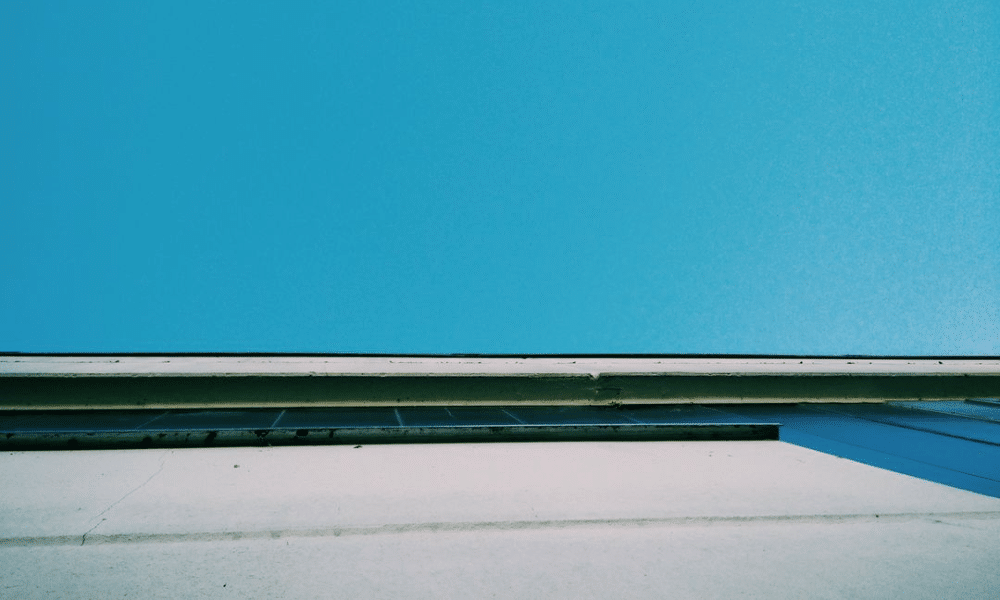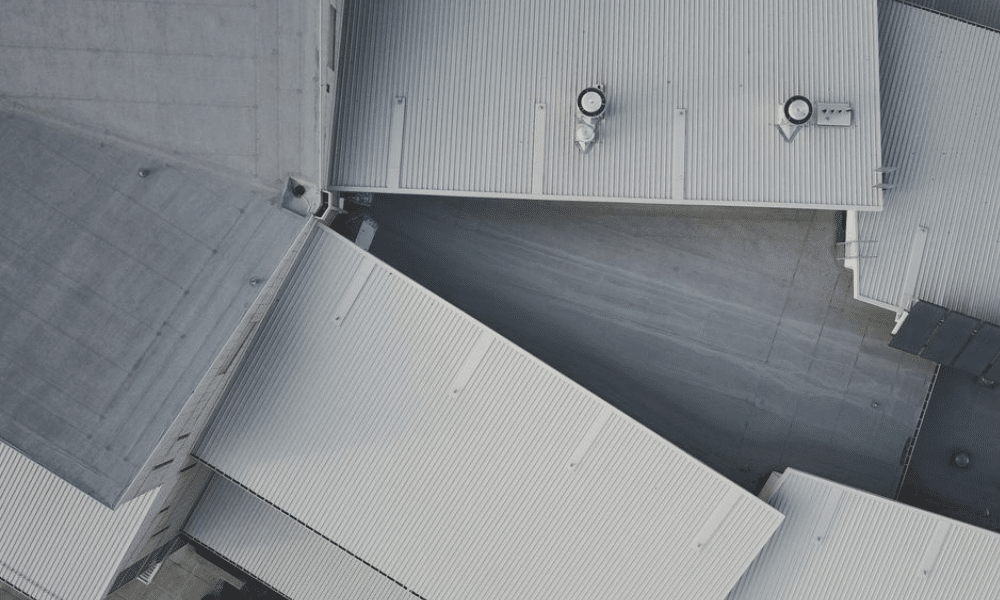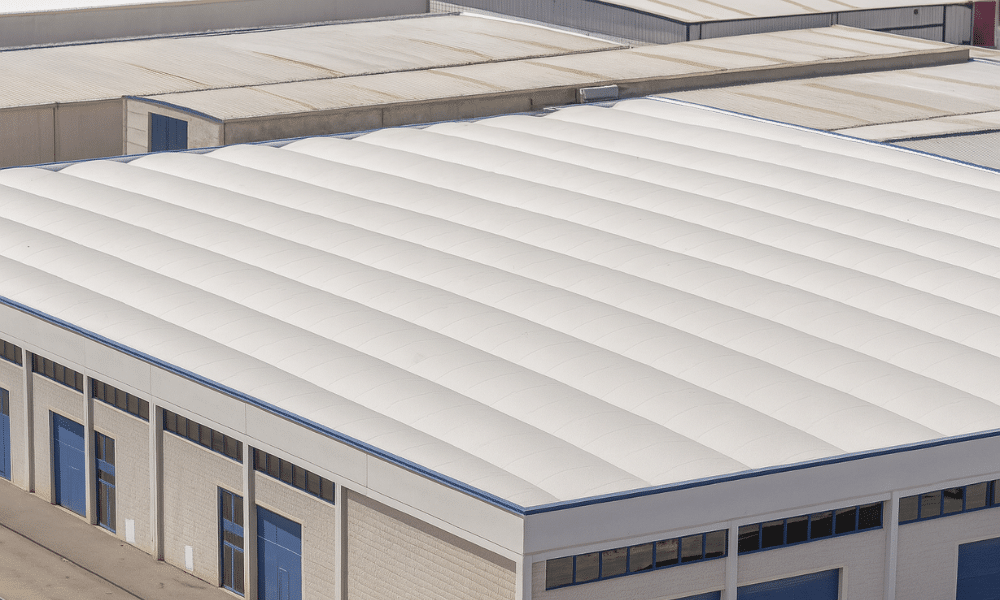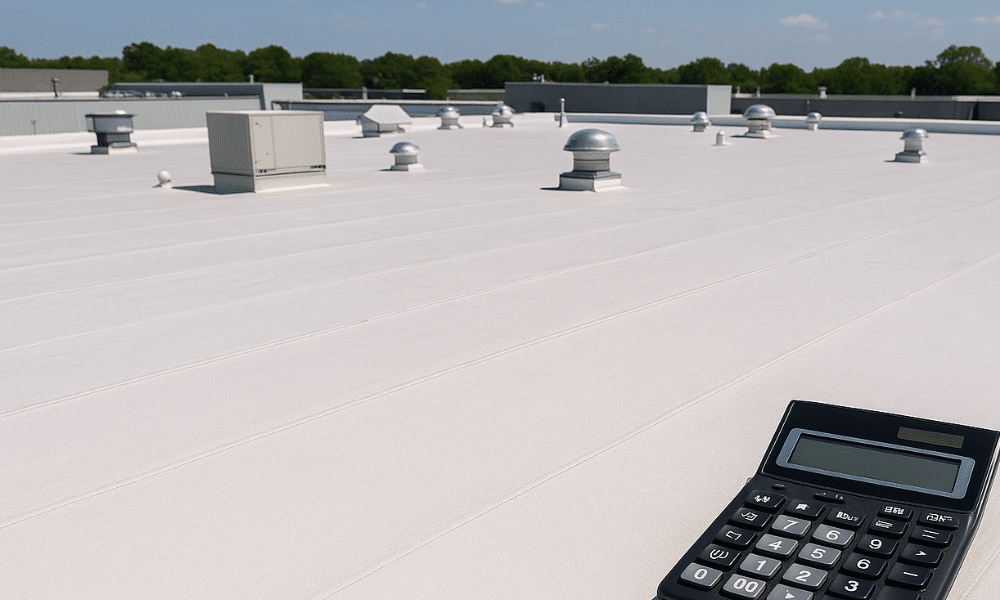
When a severe storm sweeps through your area, it's not just falling debris or heavy rain you need to worry about—strong wind can silently cause major damage to your commercial roof. Whether it's a flat TPO membrane, a metal panel system, or a modified bitumen roof, wind uplift, seam separation, and flashing damage can all go unnoticed until water leaks inside. At WaterTight Roofing, we've inspected hundreds of roofs across Texas after storms, and we've seen how wind-related damage, left untreated, turns into costly repairs or full replacements.
What are the most common signs of wind damage to a commercial roof?
Lifted or Separated Flashing
Flashing is essential for sealing transitions and roof edges—especially around HVAC curbs, skylights, walls, and parapets. After a storm, strong winds can lift, twist, or peel flashing away from the roof membrane, leaving your building vulnerable to water intrusion.
If you notice flashing that looks loose, warped, or missing entirely, it could indicate the beginning of serious storm-related deterioration. This is especially critical when assessing what to do with hail damage in metal and TPO roofs, as compromised flashing often goes hand-in-hand with impact fractures or membrane weakening.
Membrane Tenting or Wrinkling
Membrane uplift is a common sign of wind damage on flat roofs like TPO or EPDM systems. When air gets beneath the membrane, it can create bubbles, wrinkles, or entire sections that look ballooned. This condition compromises the watertight seal and invites moisture intrusion with the next rainfall.
Loose or Missing Roof Panels or Shingles
Individual panels or shingles may be torn off completely on sloped metal roofing or composite systems used in retail centers or warehouse extensions. Look for exposed fasteners, uneven panel lines, or discoloration that indicates sections have shifted or detached.
Clogged or Displaced Drainage Components
Wind can blow debris into drains, gutters, and downspouts, or even dislodge them entirely. Pooling water on your roof days after the storm is often a result of damaged drainage systems. That standing water can accelerate membrane deterioration and cause long-term insulation saturation.
Interior Water Leaks or Stains
Often, the first sign a property owner notices isn't on the roof—it's inside. After a windstorm, if your ceilings show new stains or damp drywall, the damage has likely already been done. While the source might be a small breach, the consequences can include mold, electrical damage, and costly tenant complaints.
HVAC and Rooftop Equipment Movement
Winds damage the roof surface and can shift rooftop equipment, displace piping, or compromise curbs and penetrations. If your rooftop units look slightly off-kilter or produce odd noises after a storm, it's time for a full inspection.
How Can You Safely Assess Wind Damage After a Storm?
We always recommend having a professional inspection after major wind events, but there are a few things you can check safely from the ground or with drone assistance:
- Look for lifted flashing or roof edges that appear uneven
- Check for debris scattered across the roof or hanging from eaves
- Examine ceiling tiles and upper interior walls for signs of water damage
At WaterTight Roofing, we use infrared moisture detection, drone assessments, and hands-on inspections to catch wind damage others miss. We also document everything with photos and notes you can submit with your insurance claim.
What Should You Do If You Suspect Wind Damage?
The most important thing is not to wait. Wind damage doesn't always cause immediate leaks—but it opens the door to future failures. Here's what we recommend:
- Schedule a commercial roof inspection within 48–72 hours after the storm
- Document anything you notice from the ground or inside the building
- Avoid walking on the roof yourself—hidden membrane damage can pose safety risks
- Contact a qualified commercial roofing contractor with experience in storm damage response
Why Choose WaterTight Roofing for Post-Storm Repairs?
At WaterTight Roofing, we specialize in storm damage inspections, commercial roof repairs, and insurance claim documentation. We've helped building owners throughout Fort Worth, Austin, and the surrounding agricultural corridors restore their roofs after severe wind events—and we know exactly what to look for. From agricultural panel systems to urban flat roofs, we aim to ensure your roof is secure, watertight, and back in peak condition.
Need Help After a Windstorm?
Even if you don't see visible leaks, hidden wind damage can compromise your commercial roofing system—and cost you thousands in repairs down the road. Don't take the risk.
Schedule your FREE post-storm roof inspection with WaterTight Roofing today and get expert insight before minor issues become major disruptions. We'll assess your roof, document any damage, and help you confidently take the next steps.
Call us now at 888-809-9976 or contact us online to protect your building and bottom line. Peace of mind starts here.
FAQs About Commercial Roof Restoration
Blog subscribers get new resources and how-to guides delivered via email.
Your Business Relies On Staying Dry





